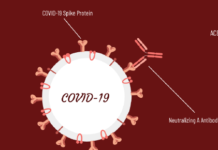When I was younger, I had my ears pierced. I remember being so excited because I’d get to wear earrings like my grandmother did. A few weeks after, my ears still had not healed. In fact, they were worse than when I had first gotten them pierced. My earlobes were turning purple and hurting badly. I did everything I was told to do to keep them clean and healthy, but they were not getting better. My mother took me to the doctor, who found out that I’m allergic to nickel. This means that I cannot wear jewelry with any kind of nickel alloy.
My allergy is fairly mild compared to other people. Meredith Westrich, a student at a St. Louis County high school that has an allergy to nickel, says, “When I was younger I tried to play the flute, but I had an allergic reaction.”
According to WebMD, people with even more extreme allergies cannot eat certain foods with high nickel content, such as chocolate and fish, because they cause health problems.
The skin rash that goes with metal allergies is known as contact dermatitis, according to MayoClinic.org. This is when the skin comes into contact with nickel and breaks out into a rash, is raised, or turns a red in color where contact with the metal took place. With contact dermatitis your skin may feel itchy. It can also cause a painful burning sensation.
Sarah Stein, a faculty member at a St. Louis area high school, has experienced this with a necklace and says, “One of my eyes swelled shut and I had a rash on my face and neck for about 6 weeks.”
Also, according to MayoClinic.org, nickel allergies are the most common cause of contact dermatitis and affects about 8% of the population. The effect of nickel allergies is more common in women than in men.
Nickel allergies are on the rise. According to the National Institutes of Health (NIH), somewhere between 10–15% of Americans having an allergy to nickel, and most of that 10-15% are women. Experts are not completely sure, but they think the rise has to do with cheap jewelry having higher nickel content.
Nickel is used in many pieces of costume jewelry. Costume jewelry is cheap and easily produced with nickel. According to NIH, 31.8% of allergic reactions due to nickel happen due to the use of costume jewelry. Many costume jewelry companies use nickel so their profits will go up instead of using more expensive metals such as gold. Unfortunately, for those of us with nickel allergies, that means buying more expensive jewelry and being unsure of what contains nickel and what does not.
There are technologies out there to help those of us with nickel allergies. A sophisticated technology that is in the process of becoming an option is a nanotechnology created by scientists at Harvard in 2011. Jeffrey Kaup, a nanotechnology expert at Harvard’s Brigham and Women’s Hospital, and his colleagues have been working to develop a cream that could act as a barrier to nickel products. This product only uses ingredients recognized as “safe agents” unlike other nickel allergy treatments on the market today. They have tested this cream on pig skin and live mice but have not yet on human subjects. So far, the experiment results look promising.
With my nickel allergy I tend to just avoid jewelry all together. Occasionally I’ll wear a necklace or bracelet, but only for a couple hours. Recently I have had to start thinking of my class ring and worrying about what metal to get. I got the metal lustrium but I had to do a little research before I made the decision.
| Related article: Jewelry, Not Always Appealing to the Eye |
When asked if she would use medicines in the future to help nickel allergies, Westrich says, “I had to take medicine when I was younger, I think it was steroids, but I haven’t tried anything recently. I might try treatments again if I have another really bad reaction.” Sarah Gebken

This work is licensed under a Creative Commons Attribution-NonCommercial-NoDerivs 3.0 Unported License













